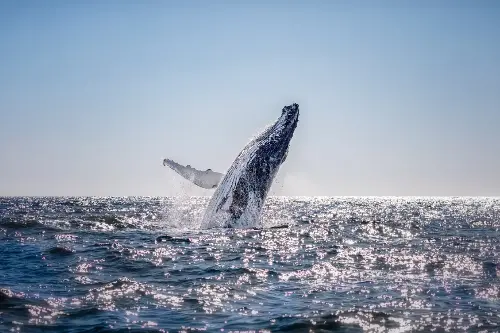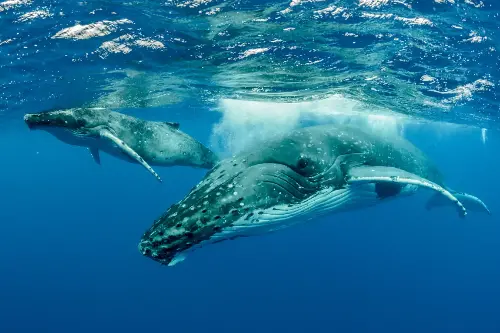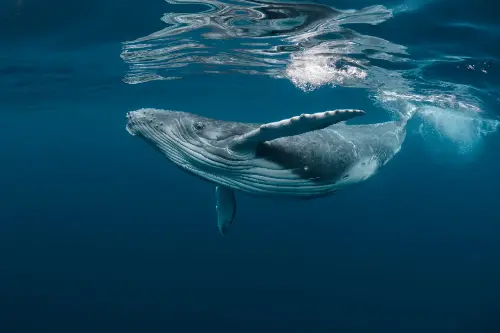As you stand at the bow of a boat or walk along the beach, you might sometimes hear an ethereal sound rising from the deep, a song that resonates through water and into our human hearts. This hauntingly beautiful melody belongs to one of the ocean's most magnificent creatures, the Humpback Whale. Their songs weave a mystery as deep as the waters they inhabit, a symphony that scientists, marine biologists, and enthusiasts alike have long tried to decode. The singing of humpback whales is not merely a natural wonder; it's an acoustic ballet, a piece of artistry that is both profound and scientifically significant.
Understanding the Melodic Marvel

Humpback whales are famed for their extensive and elaborate song sequences that can last for hours. A single song can last anywhere from 10 to 20 minutes, and whales will repeat them for hours at a time. Each population of humpback whales has its own unique song, which evolves over time. What many may not realise is that within a single population, all males sing the same song, reflecting a cultural connection unseen in any other non-human species.
The content of these songs is extraordinarily complex, composed of a series of moans, cries, and howls that are structured into phrases, which in turn form themes that collectively build a song. This structure mirrors the way human music is arranged and suggests a high level of cognitive function within these cetaceans.
Exploring the Purpose of Whale Songs
The primary singers among humpback whales are males, and it is broadly accepted that their songs play a crucial role in mating rituals. It's believed that these serenades serve to attract females and to assert dominance or deter other males. However, it also seems that whale songs are not restricted to the breeding season, and they might serve additional social purposes among whale pods.
Deciphering the precise meaning of each nuance in the whale songs is a challenge. Each journey into the marine world peels back layers, revealing insights into these enigmatic giants of the sea, yet much remains shrouded in mystery. Researchers are continually uncovering more about the complexity of the songs and what they may tell us about the lives and society of whales.
A Sonic Snapshot of Whale Culture

What makes the understanding of humpback whale songs truly captivating is the recognition of their cultural component. Whales have been observed to gradually change their songs over time, suggesting a process of learning and adaptation. Remarkably, these changes can spread across oceans as whales from different populations interact. This mirrors the way human cultures exchange and adapt ideas, a concept that has profound implications for our understanding of animal intelligence and socialisation.
The Scientific Symphony
Analysis of whale songs does not only aim to satisfy human curiosity about these leviathans but serves as a crucial tool for conservation. The study of these unique melodies enables scientists to track whale populations, understand their migration patterns, and monitor their behaviour. This is significant in our effort to protect these magnificent creatures, as it allows experts to make informed decisions about marine conservation strategies and policies.
Listening to the Ocean's Heartbeat
In recent years, technology has enabled us to listen in on whale communication like never before. Underwater recording devices have brought the songs of whales into research labs and living rooms across the globe, allowing us to share in the chorus that has rippled beneath the waves for millennia.
The continual analysis of these songs is not just an exercise in scientific inquiry; it is an art form in itself. To decipher the ocean's music, scientists must become part linguist, part musician, immersing themselves in the acoustic waves of whale culture.
The Enduring Mystery

Despite all the insights, the whale song retains its mystique, a marine murmur that reaches out to the very essence of our being. It's a reminder of how much of the natural world remains untouched, a call to preserve the environment that holds such wonders.
Humpback whales continue to sing their complex and haunting songs, a call that is both an invitation and a challenge. To study these giants is to listen to the very heartbeat of the ocean, acknowledging that in their songs, there is a message to mankind—a message of deep connectivity, shared ecosystems, and the intricate wonders of life beneath the waves.
As research continues to unravel the purpose and structure of whale songs, we are invited to consider the broader implications for conservation, communication, and our own human understanding of other species. The mysterious choir of the ocean's depths, with its melodic mystique and acoustic artistry, will continue to capture imaginations, encourage preservation efforts, and stand as a testament to the complex beauty of natural life on our extraordinary planet.
